50 years ago, he taught himself how to fix TVs. Now, this 75-year-old repairman is still going strong
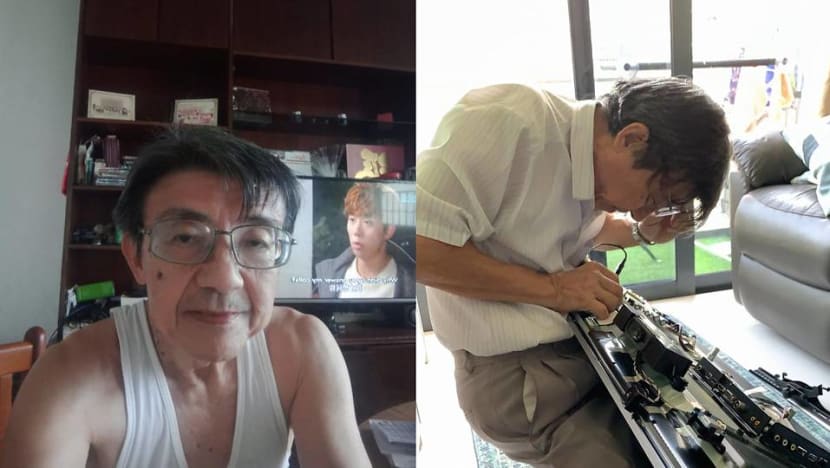
Mr Ho Kian Joo has been repairing radios and TVs for six decades. (Photos: Ho Kian Joo, Aqil Haziq Mahmud)
SINGAPORE: After both his parents died in the 1970s, self-employed TV repairman Ho Kian Joo faced the problem of there being nobody at home to answer the phone when he went out.
For someone who relies on word of mouth for customers, the phone was his source of livelihood. He knew he couldn’t miss a call, so he needed to find a solution.
Automatic voice recorders were not a thing back then, much less mobile phones. Mr Ho looked at an open-reel tape recorder and saw that it used magnets instead of mechanical circuits for its moving parts.
Mr Ho used this concept to build a mechanism that lifted the handset of his phone when a call came in. He paired it with a voice player and recorder that automatically asked the caller to leave a message, and built the circuits so everything returned to standby after the call.

The now 75-year-old looks back at that moment proudly.
“My customer called the telephone board to ask how come my phone could do this,” he told CNA in a phone interview. “In this line, I’ve come across so many electronics you can use to improvise.”
Mr Ho’s journey to becoming a skillful and determined repairman started when he was only 14.
The year was 1959, times were tough and good jobs were hard to come by. Mr Ho’s father, who worked as a photographer earning what was in those days a sizeable S$300 a month, tried to find him some work. They looked at apprenticeships and positions in banks. Nothing worked out.
“My parents said I'd better go and learn something,” he recalled. “So they told me to learn radio repair. I just listened to what my parents said.”
Mr Ho remembers radios being popular those days. Radio shops were everywhere, as were the schools that taught how to fix them. Mr Ho’s dad paid a month of his salary to put him through a four-month beginner's course.
“At that time, I told myself I must succeed in this line because my parents gave me the money to learn it,” he said. “I cannot fail.”
This mantra, something Mr Ho repeated throughout the interview, would define him as a person who kept going no matter the odds.
In the day, he worked for an agent that repaired radios from big Japanese and American brands. At night, he moonlighted as a repairman to earn more money. When televisions became popular in Singapore in the 1970s, he taught himself how to fix them too.
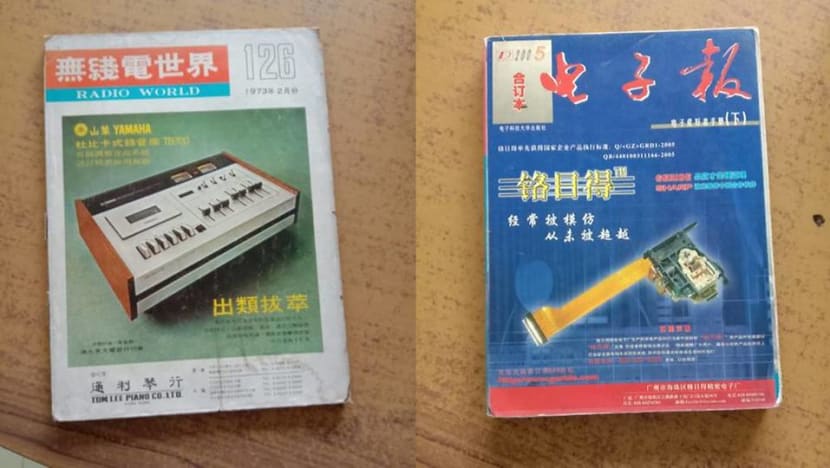
Gramophones, tape recorders and portable record players were not spared. Mr Ho studied them all. He bought weekly and monthly subscriptions for technical manuals and magazines on these electronics, flipping through them for hours each day.
Whenever he couldn’t fix something, he pored through these books until he found an answer. This was also how he kept up with new models.
“If something new comes out, I have to look for it in the books,” he said, adding that he has amassed more than 300 such books over the years. “They gave me a lot of knowledge.”
Mr Ho stuck to this practice as he worked for three different agents for about 30 years, becoming increasingly skilled with his hands.
When he realised he could only fix TVs for the few hours each day when programmes were being broadcast, he decided he had to take matters into his own hands. He built a pattern generator from scratch so he could project an image on the TV to see if the fault had been rectified, rather than having to wait for a TV show to be on air.
“I copied the design from Phillips,” he said. “I can say I’m very stingy. I don’t want to buy instruments, so if there’s something I can copy, I will.”
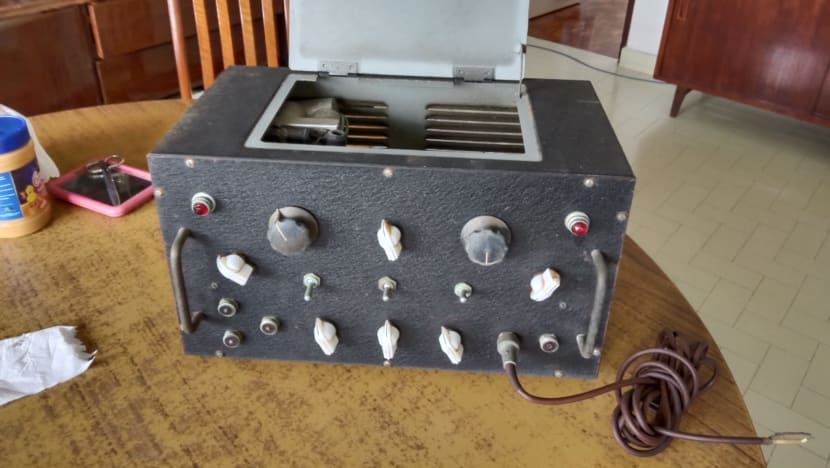
Mr Ho dabbled in other do-it-yourself activities too.
He disassembled his toolbox, filled with suckers, solder pumps and screwdrivers, and put it together it again just for kicks. When his kitchen counter surface came off, he visited a hardware store to buy tools and materials to fix it.
“I like all kinds of repair jobs,” he said.
For Mr Ho, what started as a job he didn’t want to fail in has become a passion.“I find that electronics can help me,” he added, again going back to his automatic voice recorder. “It’s very interesting, really.”
SURGERY AND MORE PAIN
Then in 1989, Mr Ho ran into a roadblock that would forever change his life.
When he was fixing a TV, he started having double vision. Soon he felt intense pain in different parts of his body. He described how he was unable to eat and pass motion, that his tongue would turn black and his toilet bowl red filled with blood.
“It was really scary,” he said.
Mr Ho decided to go ahead with an operation to remove a tooth that had grown in his sinus, close to his nose. It was risky but it seemed to have worked. Months passed without issue, then Mr Ho said the problems returned and got worse.
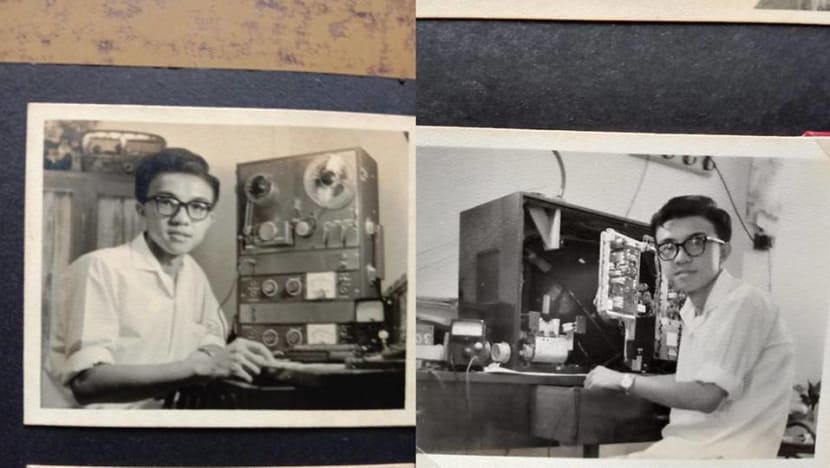
On some days, his hands or legs would swell painfully. Sometimes, he felt warm from his head to his stomach but cold from the stomach downwards.”
READ: If you don’t try to fix it you’ll never know: A 79-year-old retiree who's the neighbourhood handyman
Mr Ho was admitted to the hospital where he remembers being seen by multiple doctors. It turns out his nerves had been damaged during the surgery, and none of them knew how to cure it. “The pain was terrible,” he said.
Mr Ho went to different hospitals, visited a renowned traditional Chinese medicine practitioner and contemplated going overseas for treatment. Nothing helped.
Ever the fixer, Mr Ho gradually found out that he could not be fixed.
READ: The ‘camera whisperer’ who fixes what the professionals can’t, or won't
Doctors said taking any kind of medication would make the problem worse, but Mr Ho didn’t give up and kept thinking what he could do.
“I liked exercising as a kid, so why don’t I try it?” he thought to himself. Every morning and evening, he climbed the stairs, also doing it when he went to fix TVs. The pain started to subside. “I was very lucky,” he said.
Mr Ho discovered that he couldn’t miss the daily exercise or have coffee or tea in the afternoon. This would make pain, like an excruciating muscle pull, return.
“If I stop for one day, a lot of things will come out. I cannot even get up from bed,” he said. “The exercise is like injecting something into the nerve to make it forget pain.”
PUSHING ON
Mr Ho was still getting used to his new routine when another setback hit.
In the 1990s, many electronics giants decided to move their operations in-house, making agents like the one Mr Ho worked for irrelevant. As these firms folded, huge numbers of technicians were forced to find other jobs. Mr Ho managed to hang on to his freelance business.
“I had a friend with a shop selling TVs and records in Chinatown who introduced a lot of customers to me,” he said. “I was very lucky.”
Mr Ho is keen to emphasise that luck has always been on his side most of his life. Through the years, he has earned about S$2,000 a month repairing TVs, an amount he said was enough to sustain his lifestyle. “I’m a simple man,” he said.
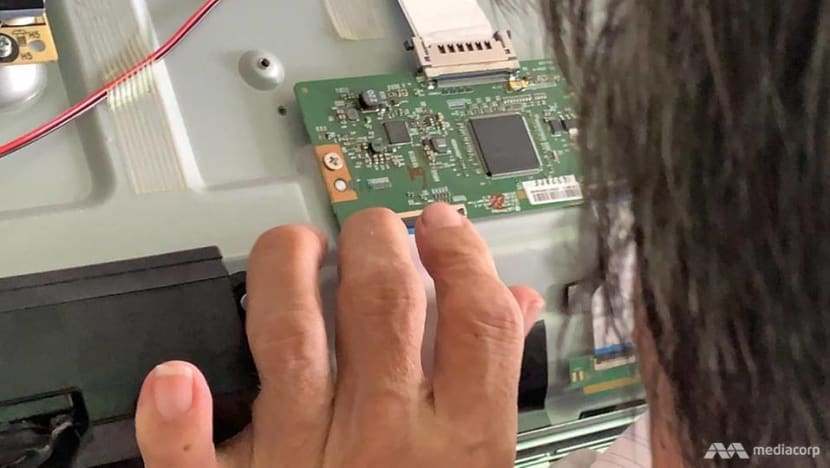
He got about four customers a day on average, but never thought about creating a website or going on social media to advertise his services. When a friend talked about starting a business, he said he was afraid of losing money.
“I have no business mind, I can just do something that’s easy for me,” he said, referring to the technical side of things. “Some people like doing business, I don’t.”
READ: ‘You’re paying for my experience, not my labour’: The handyman trying to earn his keep
Mr Ho said the customers he has had have treated him well. One family wished him a long life after he successfully repaired their TV. A few years back, a customer was so satisfied that he wrote glowingly of Mr Ho online.
“That was really lucky,” he said again. “From there, I got a lot of customers.”
Mr Ho operates via word of mouth to this day, relying on positive reviews in forums like HardwareZone. “He is a nice uncle and really experienced,” one comment read. “Seems like Mr Ho is a gem,” said another.
These netizens would only leave Mr Ho’s landline number. Up until recently, Mr Ho’s handphone was too old to even operate WhatsApp.
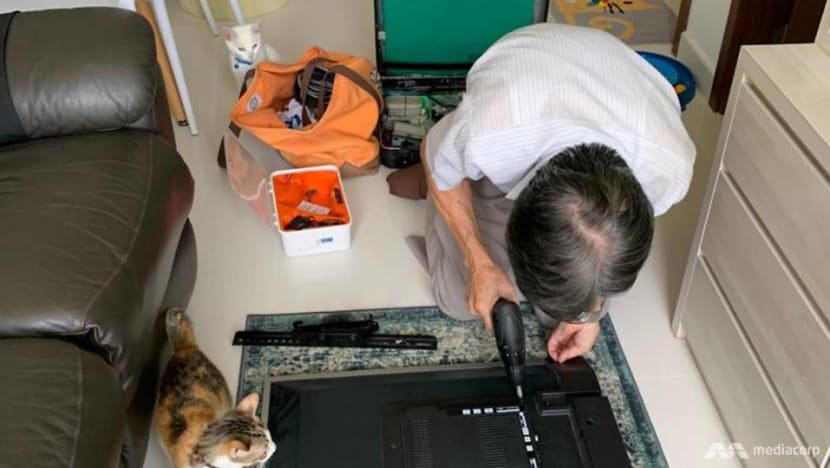
NOT STOPPING
Mr Ho charges all his customers a flat rate of S$90, unless there is a need to buy spare parts. However, he said customers would rather buy a new TV than wait a few days. He used to charge about S$100 for his repairs, but said customers found it too steep.
“When I found a repair difficult last time, I could bring the TV back and slowly check everything out,” he said. “Now it is different. They want it to be fast.”
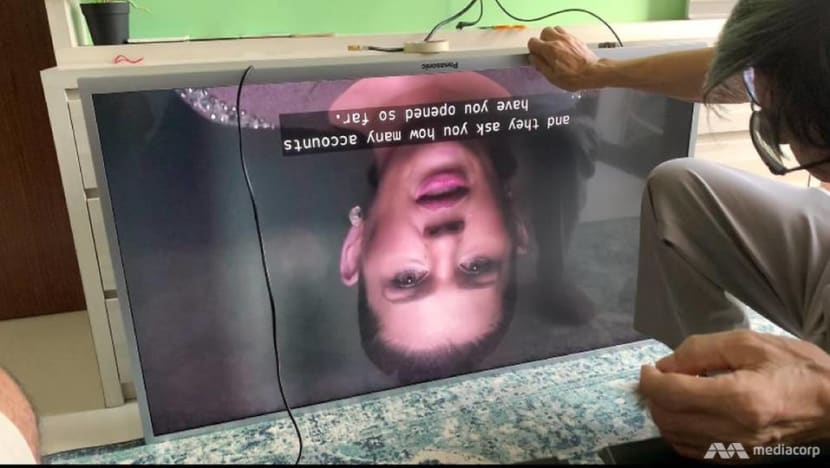
Mr Ho said spare parts have also changed over the years. Previously, he could drop by Sim Lim Tower to buy generic parts for use across many TVs. Now, he said even the same type of chips are programmed differently for different TVs.
This is why spare parts shops have struggled to stay open, Mr Ho said, recalling an occasion many years ago when the shop owners warned him to find another job as they predicted the industry’s demise.
“When I go to Sim Lim now, the shop owners who are still there say wow, you are still in this line,” he said. “It’s been 60 years. I feel great because I can still survive.”
Mr Ho, who is not married and lives with his sister, is still exercising twice a day. The only difference is that he continues to learn about TVs through the Internet and YouTube videos. “There’s a lot of things on the Internet,” he said.
It’s no surprise then that he doesn’t have plans to stop repairing TVs. “I will continue in this job as long as I can walk,” he stated.














